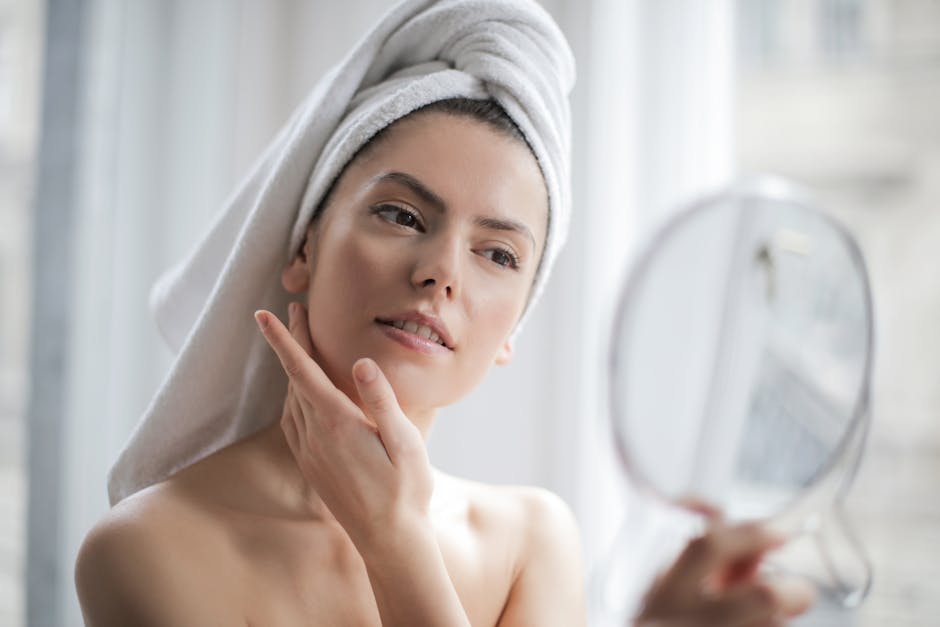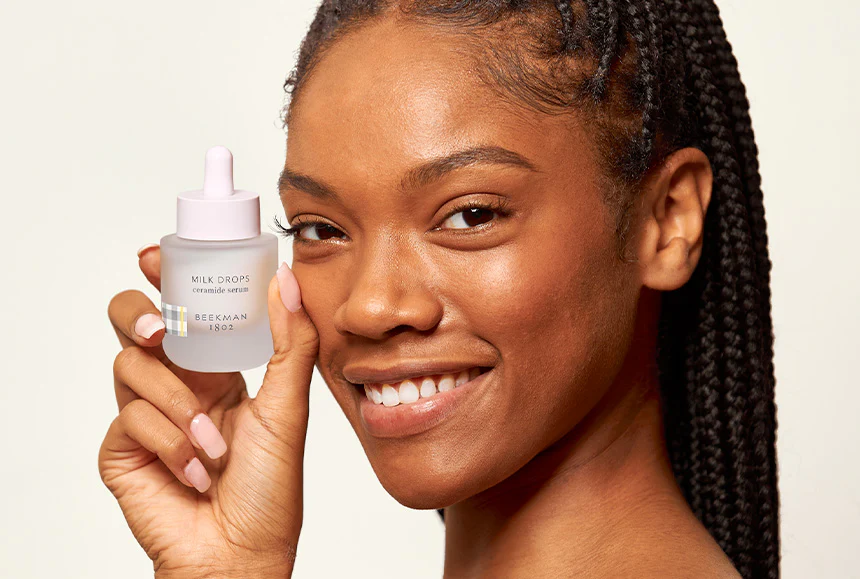The Power of Ritual: Why Beauty and Self-Care Go Hand in Hand
Beauty and self-care are deeply interconnected practices that benefit both mental wellbeing and physical appearance. For those seeking to improve their self-care routine through beauty practices, here’s what research shows:
- Mental health benefit: 64% of consumers report their beauty routines are important for mental wellbeing
- Stress reduction: Acts of self-touch during skincare lower cortisol levels
- Emotional support: Beauty rituals can help process grief and difficult emotions
- Mindfulness opportunity: Simple daily routines create moments of presence
In today’s world, the connection between beauty and self-care has evolved far beyond vanity. What was once considered purely aesthetic has transformed into an essential practice for mental health and emotional balance.
The global beauty and personal care market, valued at over $500 billion in 2023, reflects our collective understanding that taking time for ourselves isn’t trivial—it’s necessary. During the COVID-19 pandemic, 35% of consumers increased time spent on beauty and self-care routines, turning to these practices as anchors during uncertainty.
“There’s something sacred about a beauty routine,” notes research from beauty experts. “When we care for our outer selves, we signal to our minds that we are worth nurturing.” This isn’t just feel-good philosophy—studies show that the physical touch involved in applying skincare products actually reduces stress hormones and promotes self-compassion.
For busy professionals like you, beauty routines offer rare moments of pause in an otherwise demanding day. Whether it’s a quick morning skincare ritual or an elaborate weekend self-care session, these practices create space for reflection, presence, and reconnection with yourself.

Quick Beauty and self-care definitions:
– Beauty products for teens
– Sustainable beauty products
Beauty and Self-Care: How Daily Rituals Heal Inside and Out
When we talk about Beauty and self-care, we’re not just discussing products and routines—we’re exploring a powerful conversation between mind and body that flows in both directions. That simple moment when you massage moisturizer into your skin? It’s actually a profound connection with yourself that creates measurable changes in your body.

Science backs this up beautifully. Research published in scientific journals has finded that when we engage in self-touch activities—like gently applying serum or massaging in face cream—our bodies respond by significantly reducing cortisol, our main stress hormone. This isn’t just about feeling pampered; it’s about real biochemical shifts that support your overall wellbeing.
“Beauty routines have evolved beyond cosmetic—they’re essential rituals that whisper to your subconscious that you matter and deserve nurturing,” as wellness researchers have found. This perspective transforms our beauty routines from something that might feel frivolous into a necessary part of our mental health toolkit.
What’s fascinating is how younger generations have acceptd this connection intuitively. Studies show millennials invest approximately twice as much in self-care practices compared to Baby Boomers, recognizing these rituals as vital for emotional balance in our hectic world.
The physical touch element is particularly magical. When you take those extra 30 seconds to really massage your cleanser in gentle circles or press serum into your skin, you’re activating your parasympathetic nervous system—that’s your body’s “rest and digest” mode that naturally counteracts stress. This explains why your skincare routine can feel like such a sanctuary after a challenging day.
How Skincare Touch Lowers Stress
The science behind why beauty rituals feel so good comes down to a beautiful cocktail of neurotransmitters. When we engage in gentle self-touch during our skincare application, our bodies respond in remarkable ways:
Your body releases oxytocin (often called the “bonding hormone”), creating feelings of comfort and security. At the same time, cortisol levels decrease, melting away stress and anxiety. Each gentle press activates pressure receptors beneath your skin that send calming signals straight to your brain. And perhaps most importantly, your attention naturally shifts to the present moment, creating an effortless mindfulness practice.
This explains why Beauty and Mental Health are so deeply intertwined. The full sensory experience of beauty rituals—the comforting scents, the varied textures, and the nurturing touch—creates a powerful grounding technique that can help manage anxiety and brighten your mood.
As one study participant beautifully expressed, “Placing my hand on my face during my skincare routine helps me reconnect with myself. It’s like telling myself, ‘I’m here, and I matter.'” This simple gesture of self-compassion through touch can truly transform how you feel, both inside and out.
For those of us navigating high stress (and who isn’t these days?), incorporating intentional touch into beauty routines can be especially beneficial. Try gentle facial tapping, slow massage movements with your favorite facial oil, or simply pausing to place a hand on your heart between skincare steps to amplify the stress-melting benefits of your routine.
Crafting Your At-Home Self-Care Beauty Ritual
Creating a beauty and self-care ritual doesn’t require a cabinet full of expensive products or complicated techniques. What truly matters is the intention behind your practice and the atmosphere you create around this special time with yourself.

Think about the last time you walked into a spa – that immediate sense of calm wasn’t an accident. The environment plays a crucial role in elevating a routine into a ritual. Your bathroom can become that sanctuary with just a few thoughtful touches. Soft, warm lighting from candles creates an instantly soothing atmosphere that signals to your brain “this is peaceful time.” The gentle background of your favorite playlist or nature sounds helps quiet a busy mind, while a favorite scent from essential oils or candles can transport you away from daily stresses.
Even the temperature matters – a comfortably warm room helps your muscles relax and allows products to absorb better. And don’t underestimate the power of a tidy, visually pleasing arrangement of your products. That little bit of order amid life’s chaos can be surprisingly calming.
“I used to rush through my skincare routine with bathroom lights blazing and my mind racing about tomorrow’s to-do list,” shares one client. “Now I dim the lights, play soft music, and those same five minutes feel like a mini-vacation.”
Neuroscience backs this up. When we engage multiple senses simultaneously—what experts call “sensory stacking”—we create a deeper relaxation response and make the experience more memorable. Your brain forms stronger positive associations with your ritual when sight, sound, touch, and smell are all engaged.
Time-blocking is another game-changer. By setting aside even 5-10 minutes as non-negotiable “me time,” you signal to yourself that self-care isn’t selfish—it’s essential. As one study participant beautifully put it, “Knowing I have those 10 minutes every evening to focus just on myself has become my daily anchor.”
| 3-Step Ritual | 7-Step Ritual |
|---|---|
| Cleanse (1 min) | Oil cleanse (1 min) |
| Moisturize (1 min) | Water-based cleanse (1 min) |
| SPF (30 sec) | Toner/essence (30 sec) |
| Serum (1 min) | |
| Eye cream (30 sec) | |
| Moisturizer (1 min) | |
| SPF (30 sec) | |
| Total: 2.5 min | Total: 5.5 min |
The beauty of self-care rituals is their flexibility. Some days you might have time for the full experience, while others call for the express version. Both approaches offer benefits—consistency matters more than complexity.
Beauty and Self-Care Starter Routine (2–10 Minutes)
If you’re just beginning or perpetually pressed for time, start with this simple three-step routine:
- Cleanse: Use a gentle cleanser that respects your skin type to wash away the day
- Hydrate: Apply moisturizer while skin is slightly damp to lock in hydration
- Protect: Finish with SPF during daytime (or swap for a night cream in your evening ritual)
This minimalist approach follows the “simplicity wins” philosophy that many skincare experts champion. Research consistently shows that consistency with a simple routine yields better results than occasionally managing a complex one. It’s like exercise—a daily 10-minute walk beats a monthly marathon.
The secret to making this starter routine stick is forming habit loops. Try anchoring your skincare steps to existing habits—like doing your evening routine immediately after brushing your teeth. This “habit stacking” approach makes the new behavior feel natural rather than forced.
For more practical ways to fit skincare into hectic schedules, our guide to Simple Skincare Tips for Busy Professionals offers plenty of time-saving strategies.
Upgrading with Mindfulness, Massage & Tools
Once your basic routine feels second nature, consider enhancing your beauty and self-care ritual with mindful techniques that deepen the experience.
Facial tapping wakes up your complexion by gently tapping fingertips around your face, boosting circulation and helping products absorb. Gua sha tools—those smooth stone implements you may have seen—aren’t just trendy; this traditional Chinese technique genuinely helps release facial tension and reduce morning puffiness. Lymphatic drainage uses light, directional massage strokes to reduce fluid retention, while incorporating breathwork—simple deep breathing as you apply products—turns your routine into a meditation.
“When I learned Japanese tapping techniques to apply my serums, it completely transformed my relationship with my routine,” shares one beauty enthusiast. “What was once a chore became a ritual I genuinely look forward to each night.”
These techniques offer double benefits: physically, they improve circulation, reduce puffiness, and improve product penetration; mentally, they reduce stress, build mindfulness, and strengthen your mind-body connection.
Curious about which tools might improve your ritual? Our guide to Beauty-Self Care Tools walks you through options worth considering. That said, tools are optional improvements, not requirements. Your hands are powerful instruments for self-massage—the mindful attention you bring matters more than any gadget.
Your ritual is uniquely yours. Start simple, stay consistent, and gradually add elements that bring you joy. The most beautiful skincare routine is the one you actually do.
Specialized Routines for Emotional Resilience
When life gets tough, beauty and self-care rituals can become powerful emotional anchors. These practices offer more than just aesthetic benefits—they provide genuine support during grief, major life transitions, or periods of overwhelming stress.

Our relationship with self-care often shifts during difficult times. Some of us might abandon our routines completely, while others cling to them like lifelines. Both responses are perfectly normal, but research has shown that maintaining gentle self-care practices during crisis can actually help us process emotions and build resilience.
I was deeply moved by one beauty expert who shared her personal journey: “After my mother’s death, I abandoned my skincare routine completely. When I eventually returned to it months later, the familiar motions and scents became a way to process my grief. The simple act of cleansing my face became a metaphor for cleansing my heart.”
This experience perfectly captures what psychologists have observed—beauty rituals can serve as “transitional objects” that help us steer emotional terrain. The sensory nature of these practices reaches parts of our emotional processing that our thinking mind might block.
To create emotionally supportive beauty moments, consider incorporating mood-boosting scents like energizing citrus or calming lavender. Try keeping a beauty journal to track not just product results but how different practices make you feel. Use your mirror time for compassionate self-talk, speaking to yourself with the kindness you’d offer a friend. Practice sensory grounding by noticing five things you can see, four you can touch, three you can hear, two you can smell, and one you can taste.
Using Beauty Rituals to Steer Grief and Change
During times of loss or major life transitions, beauty routines can become what therapists call “normalcy anchors”—familiar activities that provide stability when everything else feels like it’s spinning out of control.
One woman shared how her skincare routine helped her reclaim her sense of self: “Beauty rituals helped me reclaim my identity after a difficult divorce. When everything in my life was changing, my evening skincare routine remained constant. It reminded me that I was still me.”
This experience aligns perfectly with research showing that self-care practices help maintain our sense of identity during major disruptions. The predictable sequence of a beauty routine creates a reliable structure that feels deeply comforting when life seems chaotic.
If you’re navigating grief or change, consider embracing gentle cleansing rituals with lukewarm water and soft cloths. Look for products with memory-cue scents that evoke positive associations or comforting memories. Incorporate sensory comfort items like plush headbands or soft robes. And most importantly, give yourself permission to simplify your routine to match your energy levels without abandoning self-care completely.
For more supportive practices, our guide to Self-Care Sundays: How to Replenish Your Body and Mind offers additional guidance.
Stress-Relief Ingredients & Calming Botanicals
Nature has provided us with remarkable botanicals that can genuinely reduce our stress response when applied to skin or inhaled as aromatherapy. Chamomile soothes with its anti-inflammatory properties, while lavender has been scientifically proven to reduce anxiety and promote sleep. Magnesium salts absorb through the skin to relax both muscles and nervous system, and CBD offers anti-inflammatory benefits without psychoactive effects.
Adaptogens like ashwagandha and holy basil help regulate our stress response at a deeper level. The delicate scent of rose has been shown to reduce cortisol levels, while ylang-ylang can actually lower blood pressure and heart rate when we breathe it in.
Adding these ingredients to your beauty and self-care routine amplifies the stress-relieving benefits. An evening bath with magnesium salts and a few drops of lavender oil creates a powerfully calming experience. Try finishing your day with a cup of chamomile tea containing adaptogenic herbs to prepare your body for truly restorative sleep.

Staying Consistent & Banishing Guilt
Let’s talk about the elephant in the room when it comes to beauty and self-care routines – actually sticking with them without that nagging feeling of guilt. The truth is, consistency (not perfection!) is what drives real results for both your skin and emotional wellbeing.

Do you ever catch yourself feeling a little selfish when you lock the bathroom door for 10 minutes of uninterrupted skincare time? You’re not alone. Surveys show that women especially tend to view taking care of themselves as some kind of luxury indulgence rather than the necessity it truly is.
As one wellness expert perfectly puts it: “Self-care isn’t selfish—it’s essential maintenance. You wouldn’t feel guilty for charging your phone, yet we feel guilty for recharging ourselves.” That perspective shift is everything!
The magic happens when you move from a guilt mindset to a joy mindset. Instead of seeing your evening face massage as something you’re “getting away with,” recognize it as the foundation that helps you show up as your best self for everyone else in your life.
Tiny actions make the biggest difference when building sustainable routines. These micro-habits – like applying cuticle oil while waiting for your coffee to brew or massaging in face cream while your conditioner sits – build into significant benefits without requiring huge time commitments.
Try framing your goals around who you’re becoming rather than what you’re doing. Rather than “I should do a face mask twice weekly,” tell yourself “I am someone who prioritizes skin health.” This subtle shift taps into your identity, creating much stronger motivation that lasts.
Want to dig deeper into why consistent self-care truly matters? Check out our thoughtful exploration of Why Self-Care is Important.
Science-Backed Tips to Stick with Beauty and Self-Care
Behavioral science offers some fascinating insights into making self-care stick. Instead of relying on willpower alone (which frankly, runs out pretty quickly for all of us), try these proven strategies:
Habit anchoring works wonders by connecting new beauty habits to things you already do automatically. Your brain loves these connections – try applying serum immediately after brushing your teeth, and soon you’ll feel strange if you skip it.
Reward loops tap into your brain’s love of immediate gratification. Maybe it’s playing your favorite upbeat song during your morning routine or saving a special scented product for completion of your evening ritual. Your brain quickly learns to associate pleasure with the routine.
Creating an accountability buddy system can be surprisingly effective. One client shared: “My sister and I text each other ‘face done?’ every night. Knowing someone else is checking in makes me so much more likely to follow through, even when I’m exhausted.”
Progress photos provide visual proof that your efforts are working. Our brains are wired to discount slow, incremental changes – those weekly skin photos help you see the real progress that might otherwise go unnoticed.
Setting boundaries around digital detox time protects your self-care window. The emails will still be there after your 10-minute routine, I promise!
Environment design might be the most underrated strategy of all. “I struggled with consistency until I created a ‘beauty station’ right by my bed,” one reader told us. “Now I never skip my evening routine because everything I need is within arm’s reach when I’m tired.”
Finally, create implementation intentions by deciding exactly when, where, and how you’ll complete your routines. The specificity turns vague intentions into concrete plans your brain can execute.
The beautiful thing about these strategies is that they work together to create systems that support you, rather than relying on motivation alone. By making self-care the path of least resistance in your life, consistency becomes your new normal – guilt-free.
Frequently Asked Questions about Beauty and Self-Care
Does a beauty routine really benefit mental health?
Absolutely! The science here is quite compelling. Recent research from 2022 shows that simple acts like massaging moisturizer into your skin actually lowers cortisol (that pesky stress hormone that can wreak havoc on our bodies) and gives us better tools to handle life’s pressures.
But it goes deeper than just the physical touch. When you carve out those few minutes for your beauty and self-care routine, you’re creating a little mindfulness sanctuary in your day. This intentional pause signals your nervous system to shift from “fight-or-flight” into “rest and digest” mode – essentially telling your body, “Hey, we’re safe here.”
Many people tell us their beauty rituals become a form of self-expression and identity affirmation. This becomes especially precious during those wobbly life transitions when everything else feels uncertain.
As one psychologist beautifully put it, “The predictable sequence of a beauty routine can create a sense of control and competence that extends beyond skincare to other areas of life.” That’s the magic – the confidence and calm you cultivate during those few minutes ripples out into everything else you do.
How long before I feel the effects of a new self-care ritual?
The beauty of beauty and self-care rituals (see what I did there?) is that the benefits arrive in waves:
Right away, you might notice an immediate mood lift and stress reduction even during your very first mindful beauty session. That satisfaction of having done something kind for yourself? That’s real and valuable!
Within days or weeks, your skin starts responding with improved hydration, less redness, and smoother texture – the physical evidence that your efforts matter.
The deeper change typically unfolds over 4-12 weeks as your skin completes its natural renewal cycle (about 28 days for most adults) and as your new habits become woven into the fabric of your life.
Many people tell us they feel a psychological boost – that little glow of accomplishment – immediately after completing their very first intentional beauty ritual. This instant reward helps keep you coming back for more.
Both the skin benefits and mental wellbeing advantages follow a cumulative pattern. It’s like learning any new skill – your body and mind get better at responding with practice. Your nervous system actually becomes more efficient at shifting into relaxation mode the more consistently you practice your rituals.
What if I feel guilty spending time on appearance?
If you’re wrestling with guilt around your self-care time, you’re definitely not alone. This is incredibly common, especially for women, caregivers, and high-achievers who’ve been conditioned to put everyone else first.
Try reframing your beauty routine as health maintenance rather than vanity. Your skin is literally your largest organ – it deserves care just like your heart or lungs! Beauty and self-care isn’t frivolous; it’s fundamental.
Notice the ripple effect too. One mom shared with us: “I used to feel guilty about my skincare routine until I realized it was 10 minutes that made me a more patient parent for the other 23 hours and 50 minutes of the day.” That perspective shift can be transformative – seeing self-care not as taking from others but as making you more present for them.
It’s also worth examining where these feelings come from. Our culture often labels self-nurturing as “selfish” or “indulgent,” especially for women. Question those messages! Would you feel guilty about charging your phone? Probably not – yet we feel guilty for recharging ourselves.
If guilt is still showing up, start small. Even 2-3 minutes of intentional self-care creates meaningful benefits. Track how your mood and patience improve afterward – having concrete evidence can help quiet that inner critic.
Self-care isn’t just about looking good—it’s about feeling good, functioning well, and modeling healthy boundaries for everyone around you.
Conclusion
The connection between Beauty and self-care runs deeper than what meets the eye. When we approach our beauty rituals mindfully, they become powerful tools for nurturing both body and mind, creating islands of calm in our increasingly chaotic world.
What truly matters isn’t how elaborate or expensive your routine is, but the quality of attention you bring to it. A simple three-step skincare routine performed with presence and intention often delivers more profound benefits than an extensive regimen rushed through while mentally elsewhere.
The benefits we’ve explored throughout this article reach far beyond improving your appearance:
When you massage that moisturizer into your skin, you’re actually lowering your cortisol levels. When you maintain your evening cleansing ritual during a difficult time, you’re creating emotional stability. The scent of your favorite serum might be accessing emotional processing in ways talk therapy can’t quite reach. And those five minutes you spend on yourself each morning and evening? They’re building into significant wellbeing over weeks and months.
At Beyond Beauty Lab, we accept a holistic approach to beauty—one that recognizes the beautiful dance between inner wellbeing and outer radiance. True beauty blossoms when we care for ourselves with compassion, consistency, and a sense of joy rather than obligation.
We encourage you to experiment with the practices we’ve shared, adapting them to fit your unique life circumstances and preferences. Remember: self-care isn’t a selfish indulgence—it’s essential maintenance that allows you to show up as your best self in all areas of your life.
Your journey toward holistic beauty and wellness doesn’t end with this article. For more guidance on creating sustainable self-care habits that support your overall wellbeing, explore our additional resources at Beyond Beauty Lab. We’re here to support you in creating beauty rituals that heal from the inside out, one mindful moment at a time.







